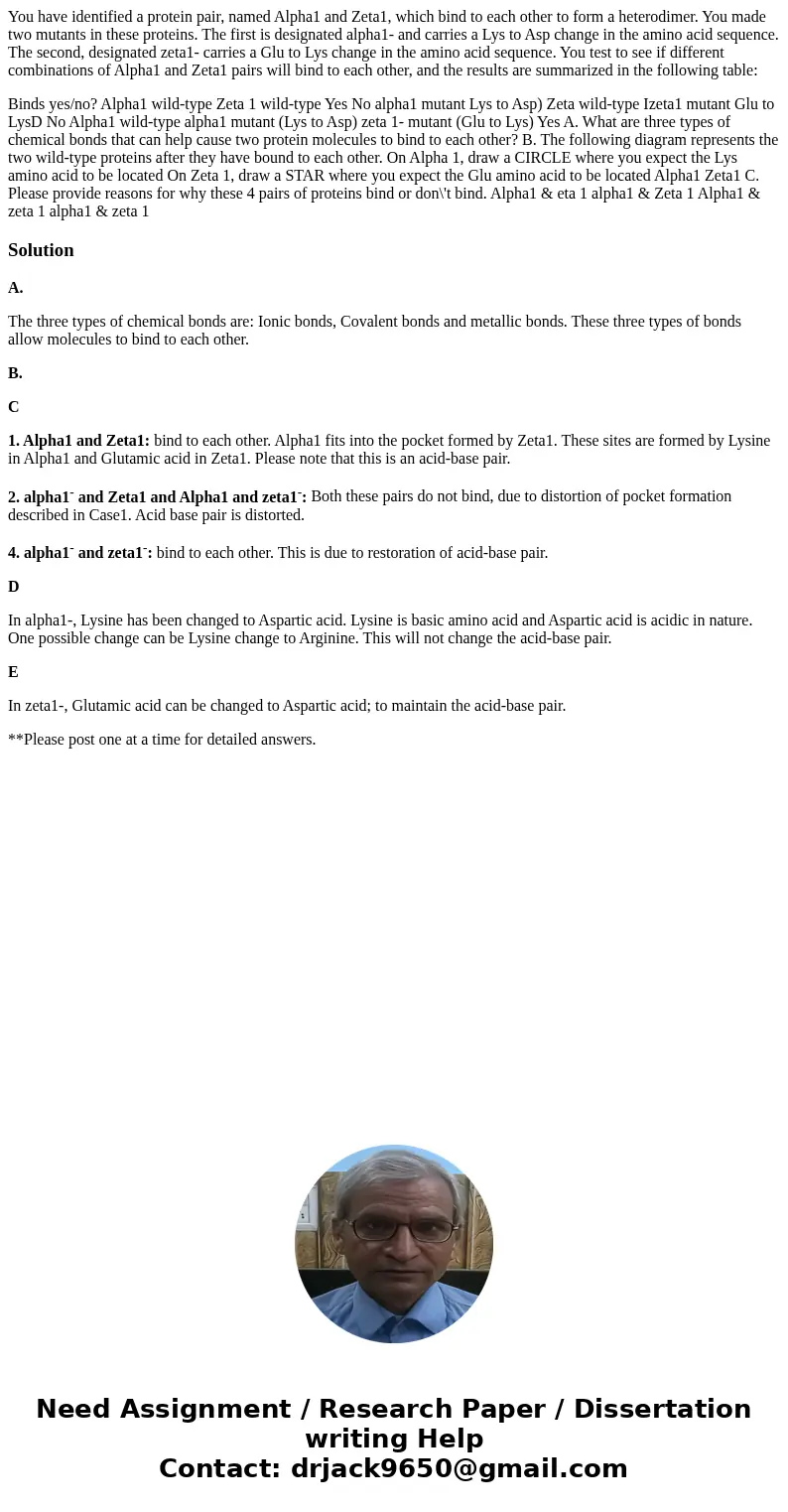You have identified a protein pair named Alpha1 and Zeta1 wh
You have identified a protein pair, named Alpha1 and Zeta1, which bind to each other to form a heterodimer. You made two mutants in these proteins. The first is designated alpha1- and carries a Lys to Asp change in the amino acid sequence. The second, designated zeta1- carries a Glu to Lys change in the amino acid sequence. You test to see if different combinations of Alpha1 and Zeta1 pairs will bind to each other, and the results are summarized in the following table:
Binds yes/no? Alpha1 wild-type Zeta 1 wild-type Yes No alpha1 mutant Lys to Asp) Zeta wild-type Izeta1 mutant Glu to LysD No Alpha1 wild-type alpha1 mutant (Lys to Asp) zeta 1- mutant (Glu to Lys) Yes A. What are three types of chemical bonds that can help cause two protein molecules to bind to each other? B. The following diagram represents the two wild-type proteins after they have bound to each other. On Alpha 1, draw a CIRCLE where you expect the Lys amino acid to be located On Zeta 1, draw a STAR where you expect the Glu amino acid to be located Alpha1 Zeta1 C. Please provide reasons for why these 4 pairs of proteins bind or don\'t bind. Alpha1 & eta 1 alpha1 & Zeta 1 Alpha1 & zeta 1 alpha1 & zeta 1Solution
A.
The three types of chemical bonds are: Ionic bonds, Covalent bonds and metallic bonds. These three types of bonds allow molecules to bind to each other.
B.
C
1. Alpha1 and Zeta1: bind to each other. Alpha1 fits into the pocket formed by Zeta1. These sites are formed by Lysine in Alpha1 and Glutamic acid in Zeta1. Please note that this is an acid-base pair.
2. alpha1- and Zeta1 and Alpha1 and zeta1-: Both these pairs do not bind, due to distortion of pocket formation described in Case1. Acid base pair is distorted.
4. alpha1- and zeta1-: bind to each other. This is due to restoration of acid-base pair.
D
In alpha1-, Lysine has been changed to Aspartic acid. Lysine is basic amino acid and Aspartic acid is acidic in nature. One possible change can be Lysine change to Arginine. This will not change the acid-base pair.
E
In zeta1-, Glutamic acid can be changed to Aspartic acid; to maintain the acid-base pair.
**Please post one at a time for detailed answers.

 Homework Sourse
Homework Sourse